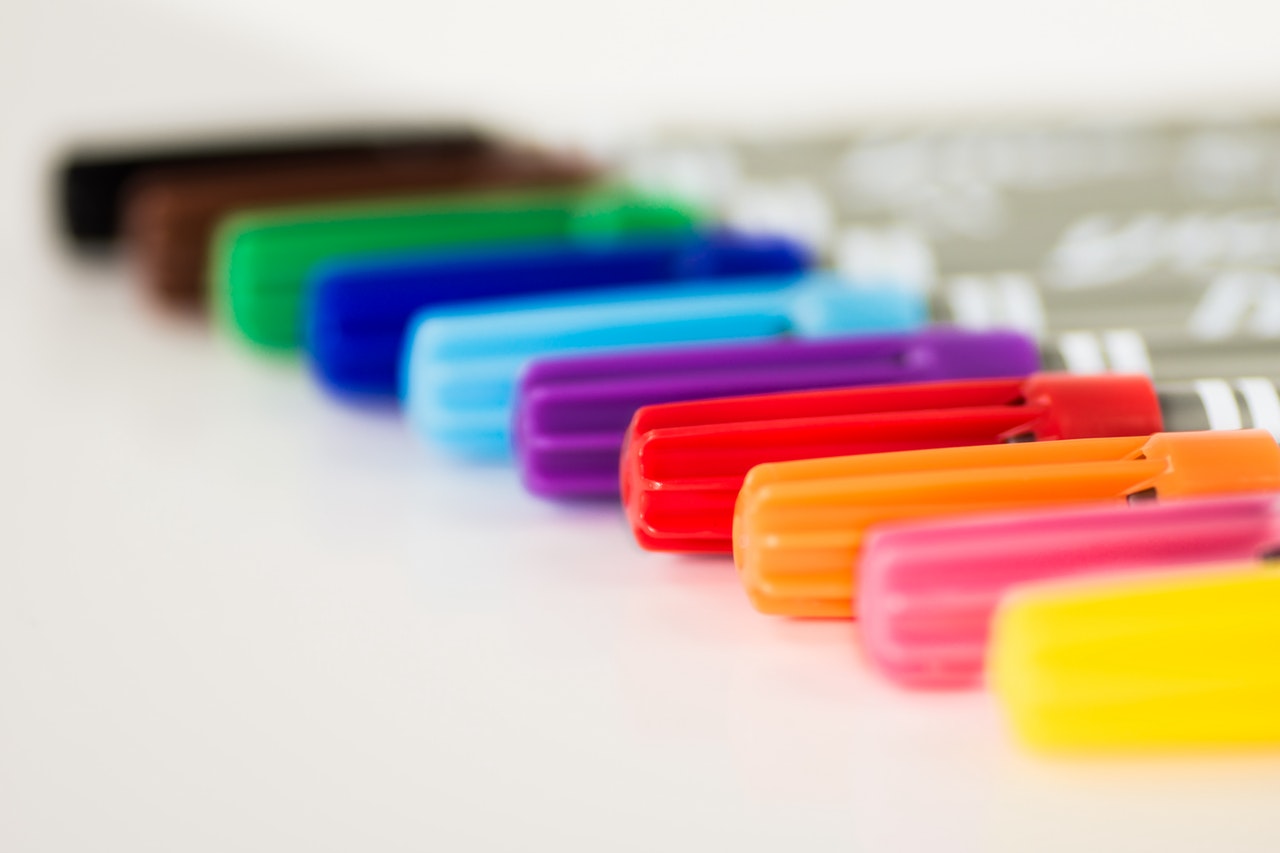1-888-440-2776

As a rule of thumb, storing markers on their side is especially important with capillary-action markers. Capillary action means the nib is always exposed to the ink inside the barrel by a long soak up mechanism. In this system, the seal of the cap is the only line of defense between the ink inside the barrel and the outside air. Storing markers like this on their side is crucial to prolonging the life of the product even with the cap on. Capillary markers such as Sharpie® should never be stored up and down; always on their side.

This means that when the nib is not depressed, the contents of the barrel are sealed from the air outside. The paint will last forever in there. Even if your pen is valve action, we still recommend always storing markers on their sides with the cap on.
Room temperature is always best for storing markers. For example, our salesman in Minnesota sells to all the oil pipeline fields out there. Those workers carry the markers with them. When you carry it around, the marker is kept warm. Usually that is enough but it still get's very cold out there. If they were to leave the markers outside or in their cars at night, they would reach some extreme temperatures. The change from warm to cold or cold to warm in temperature will create pressure in the barrel. If exposed to such conditions, as well as extreme heat during the summer, and neglected over time, this can, in some rare cases, cause leaking. To prevent this, we recommend degassing your markers after exposure to extreme temperatures and before the first use (see diagram below).
If we use all barrels that are plastic, we wouldn't have to worry about degassing. Raw aluminum over a long span of time can corrode and will creates gas buildup. A phenolic coating on the inside of the barrel would prevent that. These barrels are available to our customers if storage requirements for alcohol pens have such requirements.
Coming out of the factory, there will be no pressure buildup in the pens. We cannot predict how the markers will be stored and for how long after we ship them out. We can only educate our customers the best we can about the proper usage and storage of our products. If you have reason to believe that our markers were stored in extreme temperatures at any time before use, it may be a good idea to degas first.
Holding the marker upright, depress the nib to let any floating gas out of the barrel. This relieves any pressure built up inside the barrel so it doesn't force paint out of the tip on first use or worse, cause leaking in prolonged storage.

Of course, water based markers will freeze if brought below 0ºC and boil if brought to 100ºC. This tolerance window is much narrower than the other solvent systems such as xylene or alcohol. Freezing and boiling will dramatically shorten the shelf-life of the already shorter shelf-life of water-based markers. Some sacrifices in durability are made to have a completely non hazardous product.
